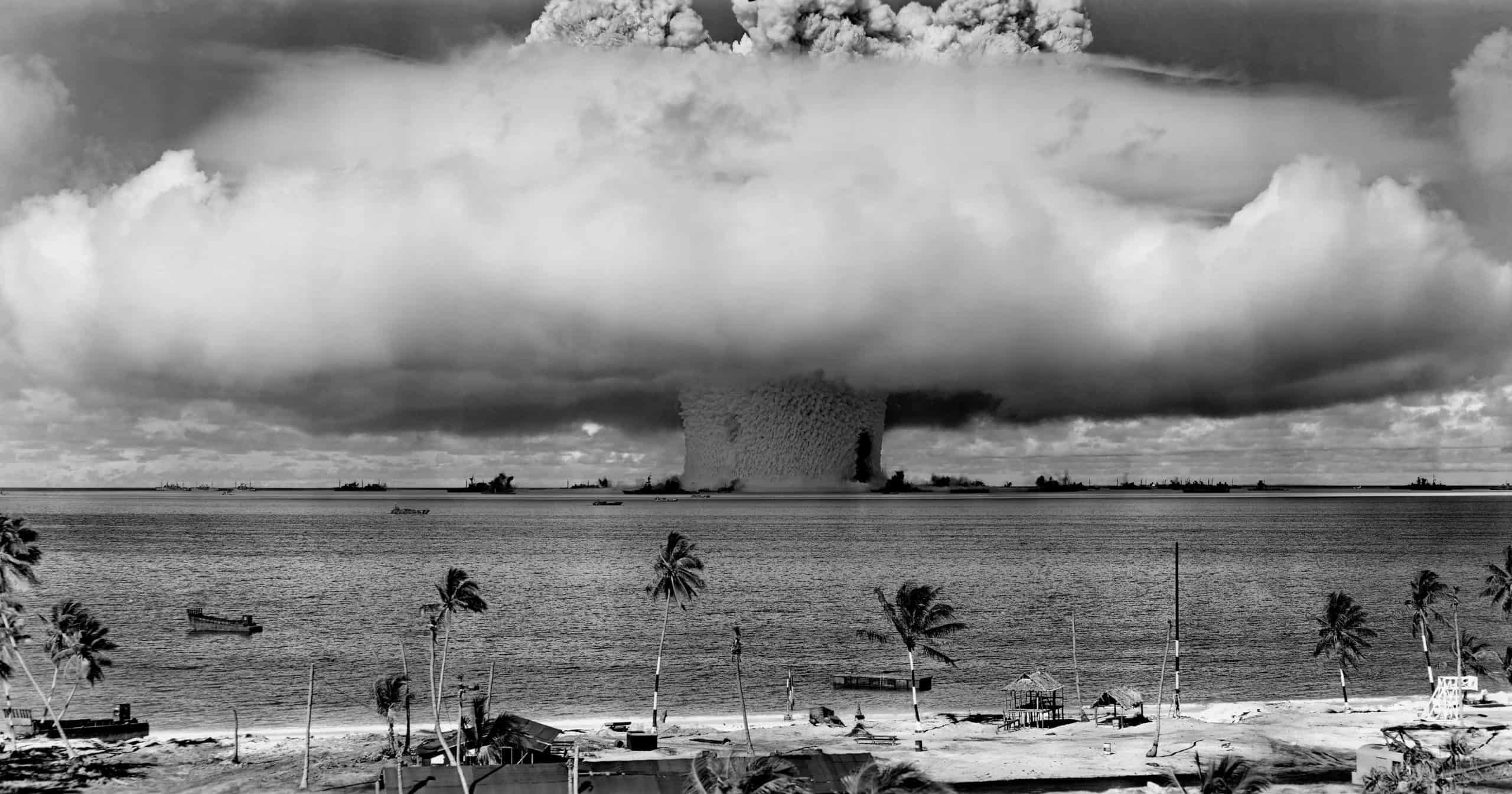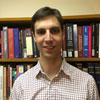A few days after Russia invaded Ukraine, Vladimir Putin put his country’s nuclear forces on “special alert”. Since then, a flurry of news articles has followed, all raising that pressing and all-important question: Is there a possibility for actual nuclear war? While experts are not presently jumping to that conclusion, it gives us a chance to reflect on the ominous nature of nuclear weapons in the context of the history of Catholic teaching and action on this topic. The Catholic Church has been consistently opposed to the use of nuclear weapons and critical of their build up as a deterrent.
This teaching may seem naïve since much of the current world order is structured around nuclear deterrence, but in a world where the use of such weapons can destroy millions of lives in a flash, a strong critique of them is sensible.
The Church’s teaching is actually quite sober in its reflection on the horrible possibility of nuclear destruction and outlines a logical path for the elimination of this possibility. In 1963, Pope John XXIII wrote an encyclical letter called Pacem in Terris (“Peace on Earth”) in which he states in clear terms his unequivocal opposition to nuclear weapons, and he advocates for their elimination: “Justice, then, right reason, and humanity urgently demand that the arms race should cease, that the stockpiles which exist in various countries should be reduced equally and simultaneously by the parties concerned, that nuclear weapons should be banned, and that a general agreement should eventually be reached about progressive disarmament and an effective method of control” (112). The problem with trying to secure peace through countries’ possession of equal amounts of arms is specifically singled out; instead, Pope John reminds us in this letter that true peace is found in mutual trust alone.
Following Pope John’s letter, the Second Vatican Council (1962-1965) – a gathering of bishops from around the world to discuss matters related to the Church – in the document on the Constitution on the Church in the Modern World, the bishops call the arms race a “treacherous trap for humanity” regardless of those who claimed that arms can preserve peace through deterring other countries from attacking. The council’s bishops instead taught that new approaches to peace “must” be taken to remove this trap. But this authoritative church council went much further, proclaiming, “Divine Providence urgently demands of us that we free ourselves from the age-old slavery of war.” It goes on to say that it is our “duty” to strive to end war altogether by international consent.
The Vatican’s statements on nuclear weapons date back to the middle of the 20th century. In 1948, a few years after Hiroshima and Nagasaki, Pope Pius XII said that the atomic bomb is “the most terrible weapon that the human mind has ever conceived” in an address to the members of the Pontifical Academy of the Sciences. Seven years later, Pius reflected on the frightening prospect of the further use of nuclear weapons in a radio message: “Entire cities, even the largest and richest in history and art, annihilated; a black blanket of death over the pulverized matter, covering countless victims with limbs burnt, twisted, scattered, while others groan in spasms of agony.”
The following Pope, John XXIII (the author of Pacem in Terris mentioned above) intervened in the Cold War conflict between the United States and Russia in 1962 to prevent escalation between these two nuclear-armed powers. This historical mediation is particularly relevant because the Vatican has recently offered to take up a mediating role in the current Russia-Ukraine conflict, one in which the US and its allies are not the precise target but are the nuclear powers on the side of Ukraine. During one peak in Cold War tensions, the Cuban Missile Crisis, when no way out could be found, President John F. Kennedy’s administration reached out to Pope John to mediate in this conflict and the Soviets agreed that he could take up this role. While Soviet ships were proceeding towards the United States, Pope John delivered a message in October of that year that greatly assisted in de-escalation. To those who “bear the responsibility of power”, he said, “With your hand upon your heart, may you listen to the anguished cry from all points of land…that rises toward heaven: peace! peace!…May [rulers] do all that is in them to safeguard the peace. They will thereby keep the horrors of war from the world – a war whose consequences no one can foresee.” Two hours after Vatican radio broadcasted this message, the Soviet ships turned around and headed back home.
Examples of advocacy for nuclear disarmament by popes following this historic council could be multiplied, but it will suffice to say that every successive pope following this worldwide church gathering has endorsed eventual disarmament: Popes Paul VI, John Paul II, Benedict XVI, and Francis. In other words, every pope since nuclear weapons were invented and detonated (in the 1940s during World War II) has advocated for their abolition.
Nevertheless, in disarming their nuclear weapons, countries have legitimate concerns about losing their ability to protect their interests. From a US American perspective, we can think of how we would fare in the protection of our freedoms in the face of countries with leaders who frequently jettison them, such as Russia’s head, Vladimir Putin. The possession of these weapons can act – so the theory of deterrence goes – to deter rival countries from aggressing on each other’s interests. In fact, Ukraine agreed to disarm itself of nuclear weapons in the 1990s, and it is not unreasonable to think that they would not have been invaded if the country still had them. But ultimately, this does not solve the problem of the ever-present possibility of massive nuclear destruction since this possibility remains as long as these extraordinarily powerful weapons continue to exist. We need a way out of the threat of the destructive possibility of nuclear war, which can never be solved by a show-of-force, and this is where the Church’s teaching can shine a ray of light.
Some might find the Church’s position to be wishful thinking aimed at an ideal world rather than more practical, helpful thinking geared toward the actual world in which we live. In response, I would propose two considerations:
1) The teaching of the Church is radical. It does not aim at a world dominated by fractured relations among nations, but a world that is in the process of being healed by God. The church’s view is part of its prophetic ministry in a suffering world.
2) The Church does not drop idealistic statements “from above” but practices the hard work of peace-making from the ground, up through mediation (as I related above), through worldwide social programs, through providing opportunities for people’s spiritual development at (for example: Mass, retreats, prayer services), and other efforts. All of these practices address the causes of war in different ways by trying to repair breaches in human relationships. Indeed, a world of true peace – as Pope John XXIII taught and the Second Vatican Council affirmed – is not even possible in a world with nuclear weapons. Only trust can foster peace. If a deep-rooted peace is our goal, eventual nuclear disarmament is not a choice but a necessity.


